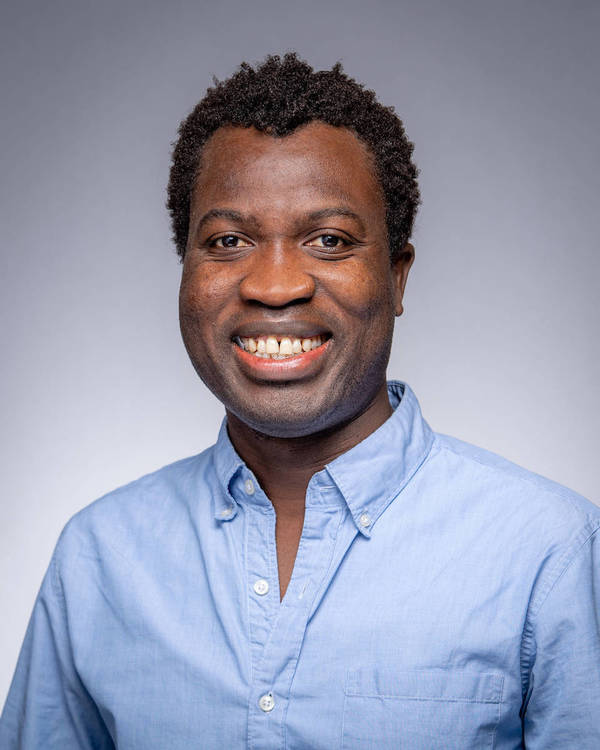Viruses can spread among the population with the risk of turning into pandemics in part because there are no therapies readily available to treat them, said Geoffrey Siwo, research assistant professor in the Department of Biological Sciences at the University of Notre Dame.
“There are possibly hundreds of thousands of viruses that have the potential to make the leap to humans, and it’s hard to develop drugs for a disease you don’t even know exists yet,” he said, pointing out that by the time researchers develop therapies, such as Remdesevir for severe Covid-19, a pandemic might have already taken hold.

Siwo’s day-to-day research involves CRISPR-Cas9, the gene editing technology. During his work studying gene expression responses in human cells to the delivery of CRISPR guide RNAs (gRNAs), which are the short, synthetic RNAs necessary for defining the gene to be modified, he noticed something unusual. The cells reacted to the CRISPR gRNAs as if they were under attack by a virus, and that they reacted the same way to some small molecules.
That got him thinking: Maybe the way to develop therapies for new viruses isn’t to target the virus. Instead, it should be to stimulate the natural antiviral defense systems that are present in all cells and that can work broadly against a wide variety of viruses … known, unknown, and mutant.
His project idea, Pandemic Response Emergency Preparedness Therapeutics Initiative (PREEMPTIVE), has now been funded through the Grand Challenges Explorations initiative of the Bill & Melinda Gates Foundation. During the next 18 months Siwo will work with the Lucy Family Institute for Data & Society and its director, Nitesh Chawla, the Frank M. Freimann Professor of Computer Science and Engineering. The team will use artificial intelligence (AI) techniques to design small molecules that stimulate the body’s natural antiviral defense systems. Such small molecules are good starting points for the development of treatments for a wide range of viral diseases, also known as broad-spectrum antiviral drugs.
“Targeting the host, rather than the virus, is the future of pandemic response,” said Siwo, who is affiliated with the Center for Research Computing and Eck Institute for Global Health. He believes drugs that switch on an intrinsic antiviral defense in human cells will be potent against a wide range of viruses and be robust to the emergence of drug resistance. Such small molecules, when combined with vaccines, could boost adaptive immune responses. They could also act as adjuvants – chemical compounds that are normally used together with vaccines to enhance the magnitude of the immune response and duration of protection from disease provided by a vaccine.
“After millions of years of evolution, nearly all cells from bacteria to mammals have learned or evolved to protect themselves from all sorts of viruses; viruses are everywhere and we don’t fall sick from them most of the time, and not everyone gets sick from any given virus,” Siwo said. “The reason we get sick is because the immune system fails at several levels.”
Most research on immunity focuses on the specialized arm of the immune system known as the adaptive immune system, which includes antibodies and involves specialized cells. The work by Siwo’s team targets an innate antiviral immune system that exists in nearly all cells and acts as the first line of defense against all viruses. Both arms of the immune system work together to protect us from most diseases and are required for vaccines to work.
The team’s computational approach includes mining a large database of more than a million gene expression profiles of human cells that have been exposed to thousands of small molecules. This approach provided leads for small molecules that have the potential to stimulate the antiviral defense system in cells, leading to broad-spectrum antiviral activity.
However, many of the compounds predicted might not be safe for use at the doses required to inhibit the virus, or may not be distributed to specific tissues that harbor the virus. In order to leverage the insights the team gained in identifying a small set of small molecules that trigger the natural antiviral defense systems, they will develop a deep learning/AI system that designs small molecules which have the same chemical properties as a given prototype molecule. The neural network will allow researchers to create a virtual library of closely related but distinct molecules to the prototypes, and researchers can then query databases of small molecules already known to be safe in humans and/or approved by the FDA to identify drugs with similar chemistries.
Next, the team will test the activity of a select set of AI-designed molecules on a range of coronaviruses through a Cooperative Research and Development Agreement (CRADA) with the Walter Reed Army Institute of Research, a United States Department of Defense Laboratory.
“The hope is to come up with therapeutics that stimulate the innate immune system that exists in every cell,” said Siwo.
In addition to receiving funding by the Gates Foundation, the project is in discussions with the Open Source Pharma Foundation (OSPF) to explore various pathways to leverage the expertise of the global research community to accelerate the research. The project is also recruiting additional partners to expand its capacity in developing potential small molecules identified by the project.
Originally published by at science.nd.edu on June 15, 2021.